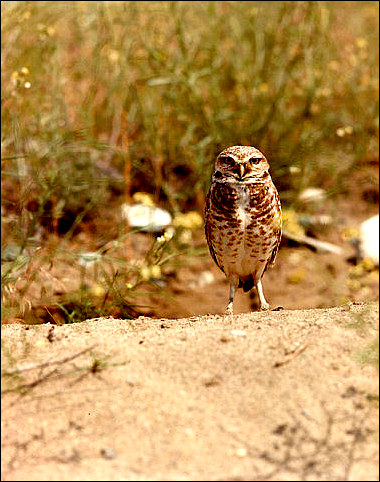

When we think of bait, all sorts of things may come to mind. One of these, most likely is NOT dung! Nevertheless, not only is it used for bait, but, of all things, by a birdbrain! Researchers noted that Burrowing Owls gather the dung of animals and scatter it near the entrances to their burrows. Two possibilities came to mind: that the odor of the dung may help mask the smell of eggs or chicks within the burrows, foiling predators; or that the dung may act as bait for dung beetles, an important prey item of the owls.
Creating 50 artificial burrows baited with quail eggs, half of the
burrows with dung and half without, the researchers tested the concealment-by-odor
hypothesis. The result? No differences in predation. They then cleared naturally
occupied burrow areas of dung, added standardized amounts to half of them, and found
that the owls inhabiting those surrounded by dung consumed 10 times more dung beetles
than those without the manure. Like a fisherman, you've just got to know what bait
to use!

Contributor: Arthur H. Harris, Laboratory for Environmental Biology, Centennial Museum, University of Texas at El Paso.
Desert Diary is a joint production of the Centennial Museum and KTEP National Public Radio at the University of Texas at El Paso.

A Burrowing Owl standing guard. Photograph courtesy of Pacific Northwest National Laboratory.
Levey, D. J., R. S. Duncan, and C. F. Levins. 2004. Use of dung as a tool by burrowing owls. Nature 431:39.